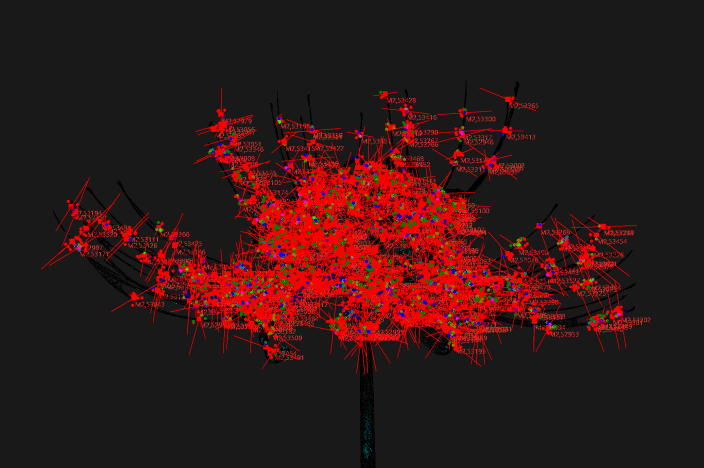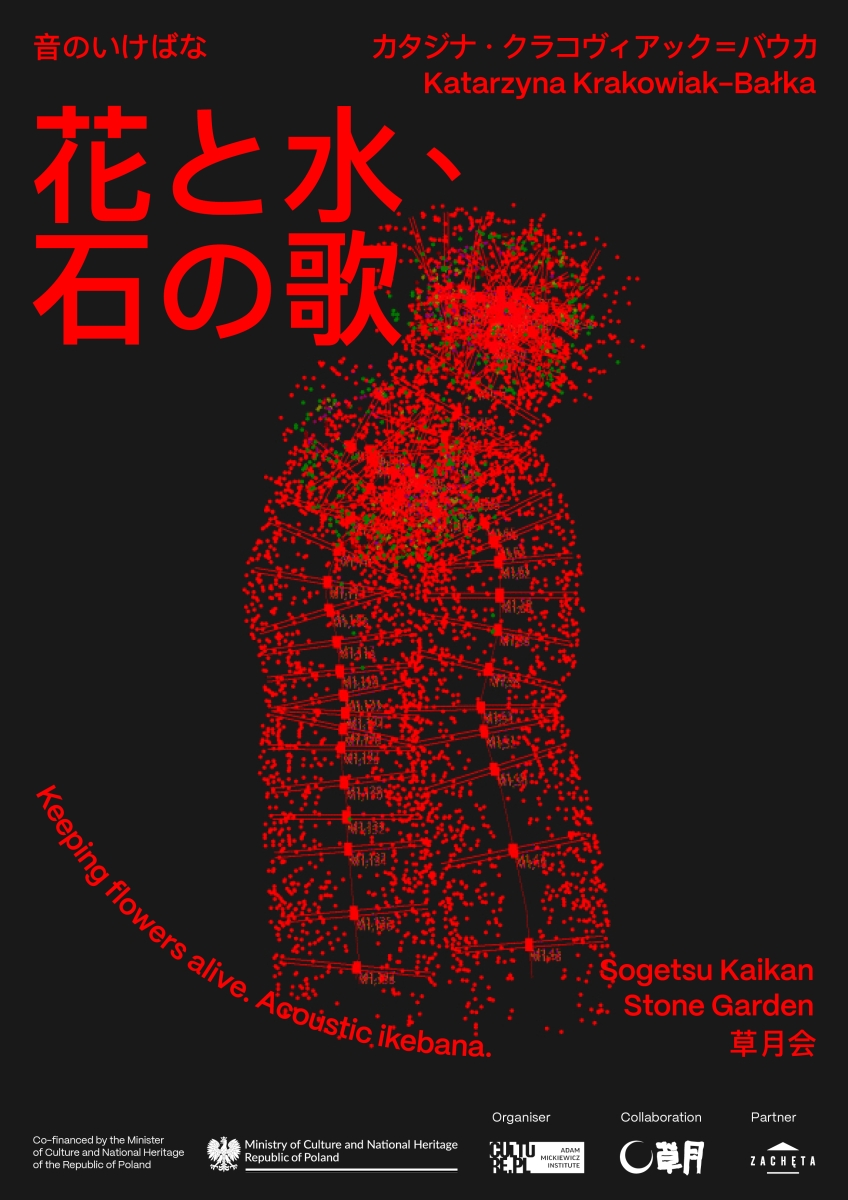
From 8 November, Katarzyna Krakowiak-Bałka’s latest work, “Keeping Flowers Alive. Acoustic Ikebana” will be on display in Tokyo. The artist will transform the space of the “Heaven” stone garden by means of the sound coming from the so-called “acoustic ikebana”. The installation will be located in Sogetsu Plaza, home of the Sogetsu Foundation, which specialises in the art of ikebana. The project is organised by the Adam Mickiewicz Institute in collaboration with Zachęta National Gallery of Art. It will be inaugurated by a series of concerts and performances that will be held in Sogetsu’s spaces from 8 to 10 November.
“Keeping Flowers Alive. Acoustic Ikebana” – acoustic ikebana by a Polish artist in the “Heaven” stone garden
Katarzyna Krakowiak-Bałka is an artist working at the intersection of architecture and sound. She creates sculptures, performances, compositions and sound installations. Her works often take the form of large-scale installations that fit into existing buildings and structures. Their aim is to create spaces that allow viewers-listeners to become part of the work of art and experience architecture through sound. The Polish artist is known to international audiences through such projects as: “Making the walls quake as if they were dilating with the secret knowledge of great powers” presented at the Venice Architecture Biennale in 2012, social sculpture “It Begins with One Word. Choose Your Own” presented at the Mies van der Rohe Pavilion in Barcelona (2020) or the installation and concert series “Where Does Any Miracle Start?” carried out at the Jeu de Paume in Paris (2022-2023).
The Polish artist’s latest project is the electroacoustic installation “Keeping Flowers Alive. Acoustic Ikebana”, which will be set in the space of the “Heaven” stone garden designed by Isamu Noguchi. It is an architectural work of art – a place where ikebana, exhibition objects or performances are presented. The sound of the so-called “acoustic ikebana” emitted by loudspeakers distributed throughout the garden and making use of its shape and elements, including the flowing water in which they will be immersed, will form the basis of the installation. “Acoustic ikebana” is a sound recording of the analysis of the geometry of floral compositions and the sounds of nature, insects and plants themselves. Katarzyna Krakowiak-Bałka will thus redefine the stone garden, turning architectural voids into a vibrant, living environment.
At the heart of the installation lies Lycoris radiata – red spider lily, known for its toxic properties and deep symbolic meaning in Japanese culture – as a metaphor for beauty on the one hand and danger on the other. Krakowiak-Bałka uses contact microphones and speakers to amplify the subtle, usually inaudible sounds of flowers, including the spider lily. These sounds reflect the plants’ survival strategies, such as the process by which they produce toxins.

Acoustic model: Katarzyna Krakowiak-Bałka, Prof. Andrzej Klosak; graphics: Renata Motyka.
Concerts and performances opening the installation “Keeping Flowers Alive. Acoustic Ikebana”.
The installation will open with a series of concerts and performances, which will take place on 8, 9 and 10 November 2024.
Singers Isabelle Duthoit, Michał Sławecki, Asthma and Yuusari as well as dancers Hikaru Kawasaki and KAi MiWA will interact with the installation, adding their voices to it and enlivening the space with movement.
Sogetsu Foundation – Japanese art centre specialising in the art of ikebana
Crucial to the project is the site, the “Heaven” stone garden located in Sogetsu Plaza, home of the Sogetsu Foundation run by Artistic Director Kiri Teshigahara. Sogetsu Plaza is an art centre specialised in teaching the art of ikebana.
The acoustic interference in the monumental space of Isamu Noguchi’s work is a chance of entering into dialogue between the history of architecture and the history of global avant-garde. The artist takes into account the historical context of Sogetsu as a post-war art centre, while referring to new meanings evoked by acoustic ikebana models.
The project also pays tribute to women’s contributions to Sogetsu’s heritage. Although in the 1960s the Sogetsu Art Centre was famous for the work of avant-garde artists such as John Cage, Yoko Ono, Robert Rauschenberg and Merce Cunningham, the vast majority of ikebana school members were women. These women, practicing the contemplative art of arranging flowers, have shaped both the physical and acoustic space of Sogetsu. Krakowiak-Bałka commemorates their role by combining the meditative silence of ikebana with experimental soundscapes as well as tradition with modern creativity.

Acoustic model: Katarzyna Krakowiak-Bałka, Prof. Andrzej Klosak; graphics: Renata Motyka.
The installation will be on display from 8 to 18 November 2024.
Organizer: Adam Mickiewicz Institute
Collaboration: Kiri Teshigahara, artistic director of Sogetsu Foundation
Partners: Zachęta National Gallery of Art, EIDOTECH Polska, Plissé Lognon, workshop of Maison Lemarié, SORA BOTANICAL GARDEN Project, Timmpi
Curators: Paweł Pachciarek, Miki Kaneda
Singers: Isabelle Duthoit, Michał Sławecki, Asthma, Yuusari
Performers: Hikaru Kawasaki, KAi MiWA
Costume designers: Anna Zeman, Tomasz Armada
Acoustic supervision: Albert Karch
Technical Collaboration: archAKUSTIK, Professor Andrzej Kłosak
Visual Identity: Renata Motyka

